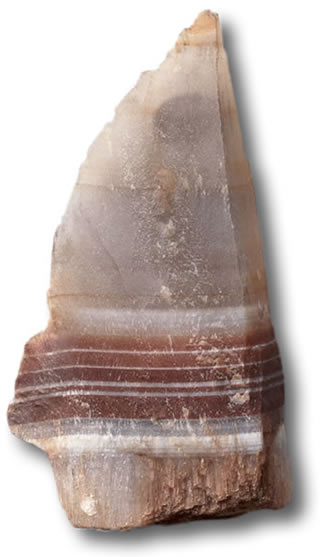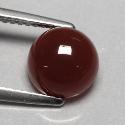Your Details
Your Details
|
Reviewed By Andreas Zabczyk
Sard and Sardonyx
Sardonyx Rough Stone
The terms sard and sardonyx are often subject to confusion in the gemstone world. Do they refer to the same gemstone? How does sard differ from carnelian? Also, is sardonyx actually a kind of onyx? The first thing to make clear is that sard and sardonyx, despite the similarity in the names, actually refer to different gemstone varieties, though both are types of microcrystalline quartz. Sard is a type of solid-colored chalcedony quartz, while sardonyx is a type of banded agate. Though many people think of onyx as referring to a black form of microcrystalline quartz, the term onyx in gemology refers to a layered stone with black and white bands. Sardonyx is actually a type of onyx, but with a brown rather than a black base. Historically, it was popular as a material for carving cameos. 
Sard Cabochon
The distinction between sard and carnelian is less clear. Carnelian is brown-red to orange chalcedony, which is colored by impurities of iron oxide. Sard has traditionally been used to refer to darker brown chalcedony. The browner the hue and/or the darker the tone, the more likely it is that chalcedony will be called sard rather than chalcedony. But the distinction is not clear-cut. Sard, sardonyx and carnelian have been used since ancient times, going back as far as the Second Dynasty of Egypt; over 4000 years ago. The empires of Greece and Rome were familiar with the material and cameo carvings have been dated to the Roman periods. There are also biblical references to these gems, such as in the High Priest's Breastplate. In the days of the Roman Empire, intaglios of Mars, the god of war, were often carved in sard and worn by officers. There is still a planetary association between Mars and sard, probably due to this early use.
Both carnelian and sard were widely used in ancient Rome to make signet rings for imprinting seals on letters or important documents. This was a good choice of gemstone since hot wax does not stick to this material. Carnelian, sard and sardonyx are found in many places in the world, including Brazil, Uruguay, India and Madagascar. |
